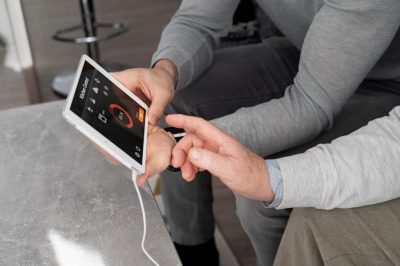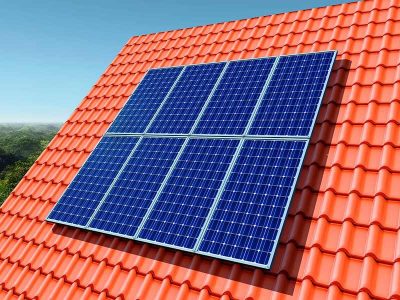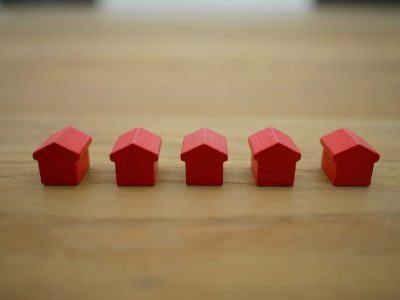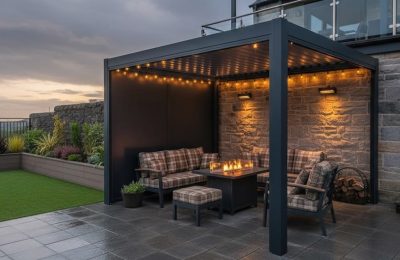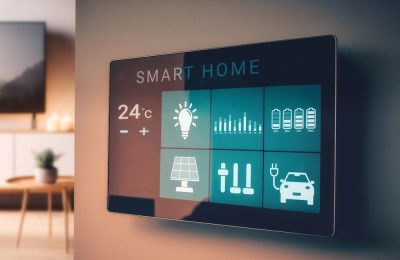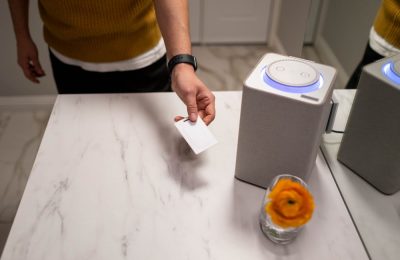There’s no doubt that our lives have been completely transformed by smart technology, from health-focused smart watches that keep us on top of our daily step count to home assistants that make ordering essentials and staying up to date with the news that much easier.
With more people working from home, and renters becoming increasingly sustainably focused when searching for properties, connected and eco-friendly properties are more in demand than ever before. What’s more, with Scottish EPC regulations set to be revised, landlords are in a prime position to make energy efficient changes now to stay ahead. Smart rentals tick all of these boxes, making them a wise investment.
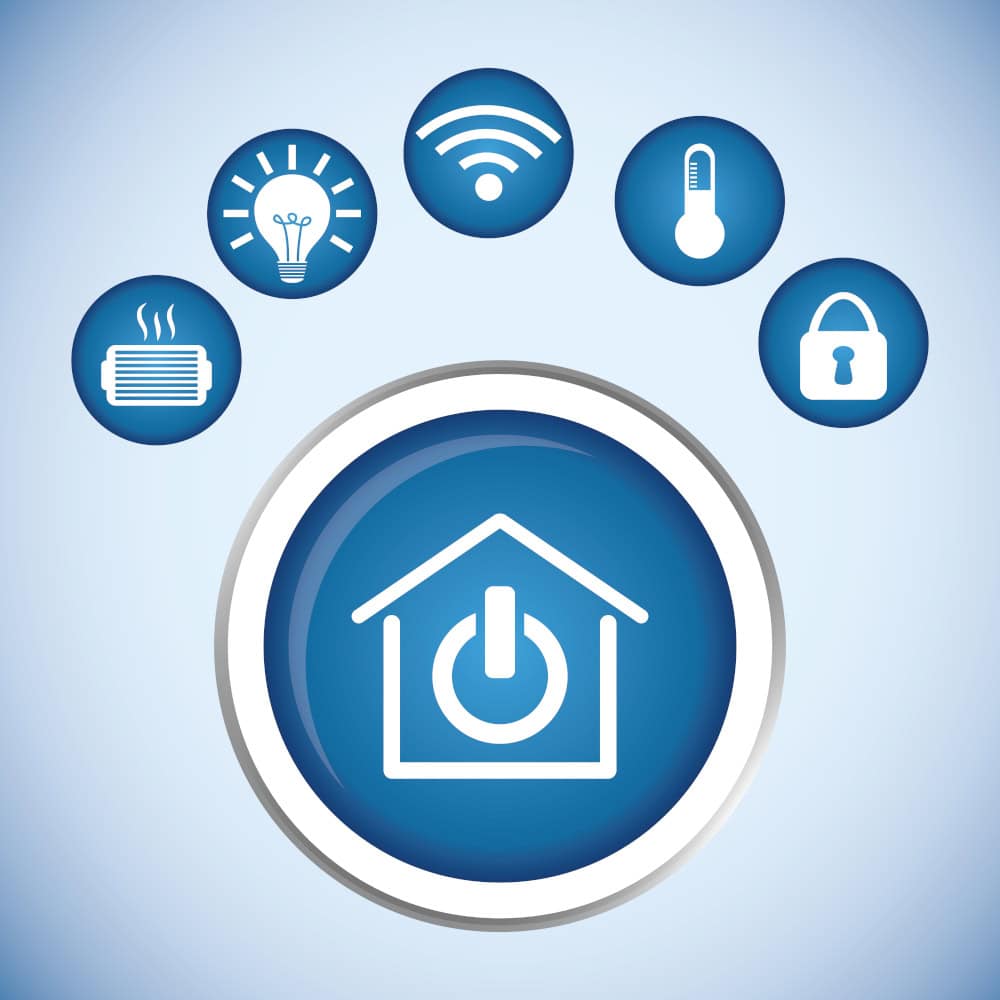
[Image source: Deposit photos]
The pillars of automation in rental properties
Enhanced security measures
Security is a major concern for many tenants, especially when living in urban areas, but smart technology provides landlords with the tools to enhance this area of property management while also improving convenience for tenants.
Smart locks, for example, provide keyless entry that eliminates the security risks associated with lost keys. Similarly, they also enable landlords to provide temporary access for contractors and maintenance visits, without compromising on long-term safety.
Video doorbells are another option that can reassure tenants and protect the property from unauthorised access. Accessible through smartphone apps, they quite literally put the control of the property in the tenant’s hands, which gives them peace of mind that they’re safe in their home.
Controlled heating and lighting
Heating and lighting account for a significant portion of a tenant’s utility costs, so changes here can help to reduce wasted electricity and create a more energy efficient property. Motion-activated lighting eliminates wasted electricity from forgotten switches, which can be especially valuable in common areas of HMOs, while smart bathroom designs incorporating low-flow fixtures with digital temperature control, reduce both water consumption and water heating costs.
Bathroom specialists Hugo Oliver explain that “incorporating smart technology into your bathroom can lead to significant energy and water savings. Devices such as smart thermostats, LED lighting with occupancy sensors, and water-efficient smart showers or taps help reduce unnecessary consumption. These features allow users to monitor and optimise their energy usage, contributing to lower utility bills, a more sustainable household and greater environmental responsibility”.
Proactive maintenance
A surprising benefit of smart rentals is that they can assist with proactive maintenance. Smart sensors can provide early warning systems that will detect issues before they become expensive emergencies.
For example, water leak detectors positioned in kitchens, bathrooms, and under boilers will automatically shut off water supplies and alert landlords or property managers to a problem immediately. Likewise, connected smoke and carbon monoxide detectors offer greater safety for tenants by sending notifications when triggered.
In Scotland’s damp climate, one of the most valuable additions to rentals is humidity and temperature sensors which monitor conditions to prevent the development of mould and condensation by keeping interiors at a healthy and safe threshold.
A better tenant experience
Smart tech can improve the tenant experience from a standard rental to an accessible space that’s designed for modern living, with voice assistants and smart hubs serving as control points for various automated systems. Rentals equipped with devices like Amazon Echo or Google Home allow for voice-controlled lighting, heating, entertainment systems and even blinds, creating a space that appeals to tech-savvy renters.
Integrated property management platforms also streamline processes by making it easier to make maintenance requests, rent payments and centralising communication. When tenants can adjust their heating remotely, receive package delivery notifications, or solve minor issues through automated systems rather than waiting for landlord responses, satisfaction rates increase considerably and landlord interventions decrease. This creates a far more efficient relationship for all parties involved.
What to know before implementing smart tech
Cost vs. benefit
While we’ve outlined several benefits here, landlords need to carry out their own cost and benefit analysis to make sure the upfront costs of hardware, installation and maintenance are worth it and will provide long-term savings. This might be in the form of energy savings, lower maintenance costs for the building itself, or a boost to rental income from making the property more attractive to tenants who are willing to pay more for a home with these features.
Tenant consent and privacy
Before installation, make sure you have clear policies in place about data collection, storage, and usage for all tenants. These should include detailed information about what data will be gathered, how it will be protected, and who will have access to it. You’ll also need to obtain explicit, written consent from tenants before adding systems that might collect personal data, such as smart thermostats that track occupancy patterns or security systems with recording capabilities.
Connectivity and infrastructure
The foundation of any new technology upgrade lies in robust connectivity and infrastructure that can support these systems. Before choosing specific technologies, do your research and assess whether your property’s existing internet infrastructure, including Wi-Fi coverage, bandwidth capacity, and cellular signal strength can handle it all. You might need to upgrade your internet service or add signal boosters in certain areas.
Installation and maintenance
Determine whether you have the expertise for installation yourself or if you’ll need to budget for professional contractors. It’s also important to develop a comprehensive maintenance plan that includes regular software updates, battery replacements, and hardware inspections. Maintenance contracts with vendors or setting aside a budget for replacement parts and eventual system upgrades can help you stay on top of inevitable costs in the future.
Choosing the right systems for the property
Not all smart solutions are appropriate for every property. Choosing the right systems will vary from rental to rental, based on your building’s characteristics and tenant needs. Start by identifying the core problems you’re trying to solve or opportunities you want to capitalise on, whether that’s energy efficiency, security enhancement, or streamlining processes for tenants. From here, you can assess whether there’s a smart tool that can help.
